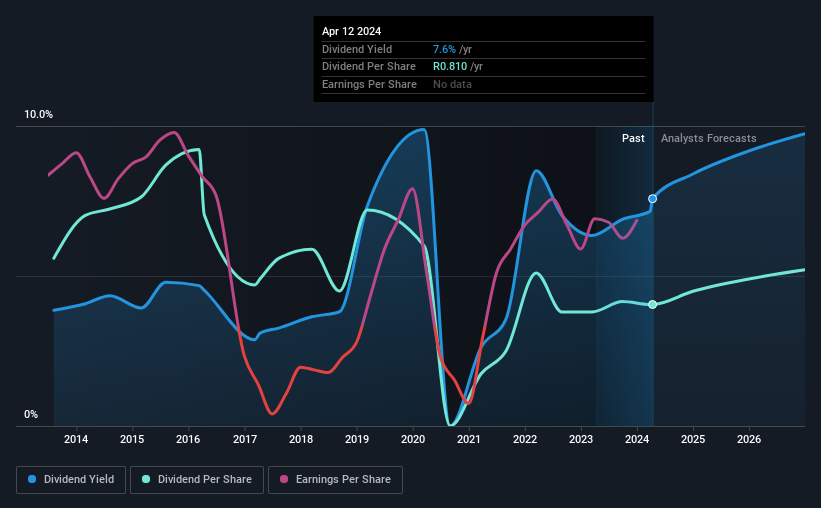Here's What We Like About Old Mutual's (JSE:OMU) Upcoming Dividend
It looks like Old Mutual Limited (JSE:OMU) is about to go ex-dividend in the next 3 days. The ex-dividend date is one business day before a company's record date, which is the date on which the company determines which shareholders are entitled to receive a dividend. It is important to be aware of the ex-dividend date because any trade on the stock needs to have been settled on or before the record date. Thus, you can purchase Old Mutual's shares before the 17th of April in order to receive the dividend, which the company will pay on the 22nd of April.
The company's upcoming dividend is R00.49 a share, following on from the last 12 months, when the company distributed a total of R0.81 per share to shareholders. Last year's total dividend payments show that Old Mutual has a trailing yield of 7.6% on the current share price of R010.69. We love seeing companies pay a dividend, but it's also important to be sure that laying the golden eggs isn't going to kill our golden goose! So we need to check whether the dividend payments are covered, and if earnings are growing.
See our latest analysis for Old Mutual
Dividends are typically paid out of company income, so if a company pays out more than it earned, its dividend is usually at a higher risk of being cut. Old Mutual paid out more than half (51%) of its earnings last year, which is a regular payout ratio for most companies.
Generally speaking, the lower a company's payout ratios, the more resilient its dividend usually is.
Click here to see the company's payout ratio, plus analyst estimates of its future dividends.
Have Earnings And Dividends Been Growing?
Companies with consistently growing earnings per share generally make the best dividend stocks, as they usually find it easier to grow dividends per share. If earnings decline and the company is forced to cut its dividend, investors could watch the value of their investment go up in smoke. It's encouraging to see Old Mutual has grown its earnings rapidly, up 23% a year for the past five years.
The main way most investors will assess a company's dividend prospects is by checking the historical rate of dividend growth. Old Mutual has seen its dividend decline 3.2% per annum on average over the past 10 years, which is not great to see. Old Mutual is a rare case where dividends have been decreasing at the same time as earnings per share have been improving. It's unusual to see, and could point to unstable conditions in the core business, or more rarely an intensified focus on reinvesting profits.
Final Takeaway
Has Old Mutual got what it takes to maintain its dividend payments? Earnings per share are growing nicely, and Old Mutual is paying out a percentage of its earnings that is around the average for dividend-paying stocks. We think this is a pretty attractive combination, and would be interested in investigating Old Mutual more closely.
On that note, you'll want to research what risks Old Mutual is facing. To help with this, we've discovered 2 warning signs for Old Mutual (1 makes us a bit uncomfortable!) that you ought to be aware of before buying the shares.
Generally, we wouldn't recommend just buying the first dividend stock you see. Here's a curated list of interesting stocks that are strong dividend payers.
Have feedback on this article? Concerned about the content? Get in touch with us directly. Alternatively, email editorial-team (at) simplywallst.com.
This article by Simply Wall St is general in nature. We provide commentary based on historical data and analyst forecasts only using an unbiased methodology and our articles are not intended to be financial advice. It does not constitute a recommendation to buy or sell any stock, and does not take account of your objectives, or your financial situation. We aim to bring you long-term focused analysis driven by fundamental data. Note that our analysis may not factor in the latest price-sensitive company announcements or qualitative material. Simply Wall St has no position in any stocks mentioned.

 Yahoo Finance
Yahoo Finance 
